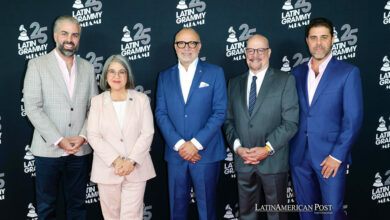Latin America vs. Russia and Turkey: The difference of gay pride march
While in countries such as Russia the march of pride is forbidden, in Latin America the community feels more support from society

In Russia and Turkey
Last Sunday, July 1, Istanbul experienced a day of tension because hundreds of protesters defied the Turkish authorities' prohibition to carry out the traditional gay pride march. This is the fourth consecutive year in which the march is prohibited. This year, authorities in Istanbul banned the march arguing the recent Ramadan holiday. At least five people were arrested and later released until the morning of Monday, July 2.
Read in english: Latinoamérica Vs Rusia y Turquía: La diferencia de la marcha del orgullo gay
In Russia, a municipal court in 2012 banned Gay Pride marches for 100 years, and the LGBT community has tried to bring legal remedies to carry them out, but their efforts have been in vain. Aleksandr Agapov, president of the Russian Federation of LGBT Sports, in an interview with Goal, assures that the persecution has led them to develop gay pride month activities behind closed doors. "We thought that, with the celebration of the football world cup, things would change, but the persecution continues and Moscow could not carry out its march despite the international community present in the country," says Agapov.
The persecution of the Russian gay community is one of the strongest in the world, and where the authorities have legally supported to counter the demonstrations of the community, "The authorities can close the visibility of LGBTI people. LGBTI people are marked as second class citizens. The law clearly states that there is an inequality between traditional and non-traditional sexual practices," says Agapov.
The Latin American case
For gay pride march in Latin America, cities like Buenos Aires, Mexico City, Bogota, Sao Paulo, Rio de Janeiro, Medellin, Lima, Asunción, Punta del Este, became a festival where not only the LGBTI community was present. The activist Tito Vasconcelos, explains to the Universal of Mexico that "although every year the march has a greater presence, only Mexico City and Guadalajara are participants of this celebration, the lack of awareness to the national population ratifies the precariousness by which passes the gay community in Mexico”. Vasconcelos affirms that the support generated by the march is not enough, but that the paradigm that the celebration is only for and for the LGBTI community must be broken.
In the case of Buenos Aires, according to the TELAM agency, more than 100,000 people attended the march. Buenos Aires continues to be one of the destinations for the LGBTI community preferred by the wide acceptance that there is for the community, as stated by TELAM.
In Colombia, demonstrations were held in favor of the community in cities such as Bogotá, Cali, Medellín, and Barranquilla. According to the website Sentido, in all the Colombian cities where there was a march "the heterosexual community was present, showing its voice of encouragement, to the struggle that the community still has for their rights."
The parade in the United States
In the United States, history has radically changed regarding the opportunity to live a full life for LGBTI people. Now, gay pride marches take place all over the country; however, these have changed as Katy Birnbaum states for The Guardian in San Francisco, "the marches are becoming more heterosexual, people come to support us, sing chants, but we as a community no longer excel."
According to a survey carried out by the GLAAD group, and published in USA Today, LGBTI groups are almost no longer attending the marches, they participate in other activities during the month, but the march is falling behind. Sarah Kate Ellis president of GLAAD says that "the reason for diversification of the marches and the increase of the heterosexual community in these is due to the acceptance that there is now towards this community that for years was repressed, there are even Christian groups that during the march they regret what happened before".
LatinAmerican Post | Carlos Eduardo Gómez Avella
Translated from “Latinoamérica Vs Rusia y Turquía: La diferencia de la marcha del orgullo gay”





